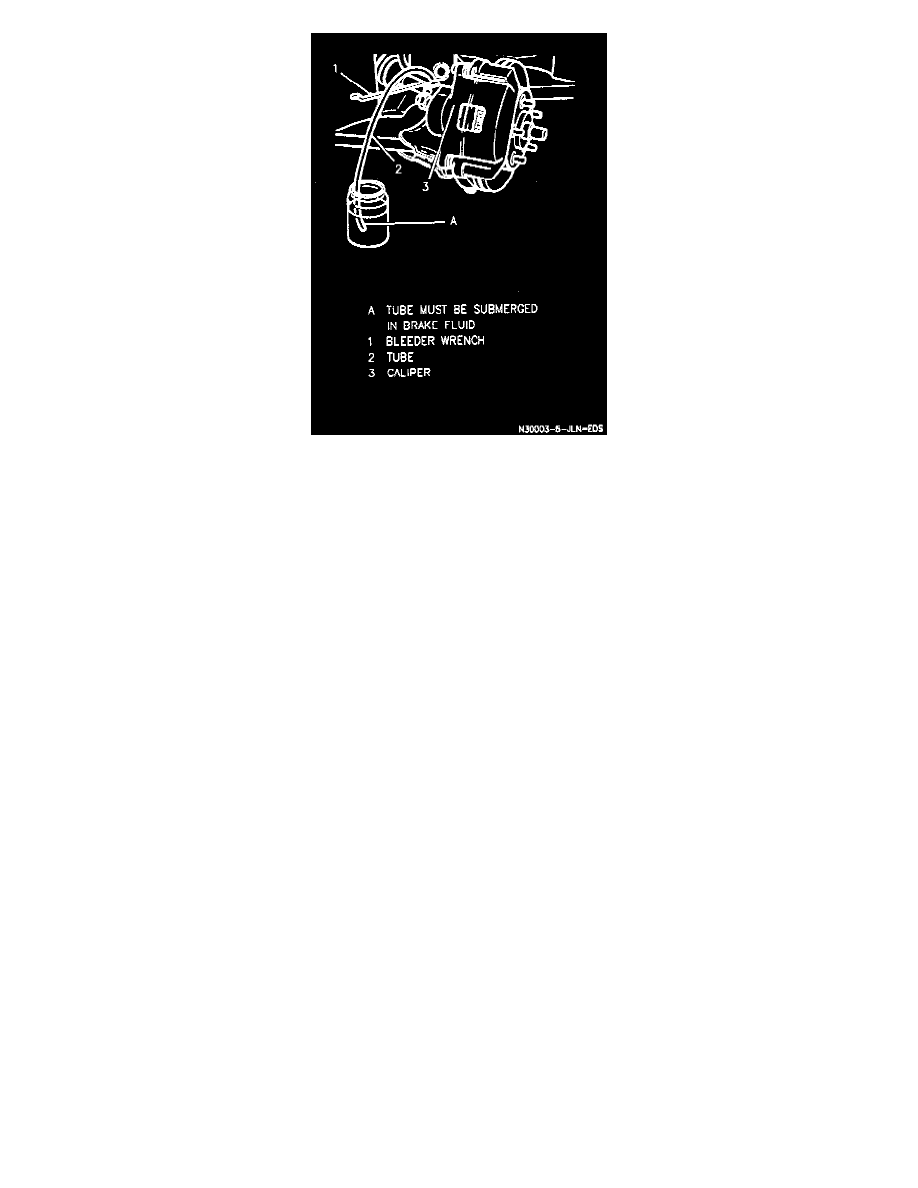Skylark L4-144 2.4L DOHC VIN T SFI (1997)

7. Attach a clear tube over the bleeder screw. Submerge the other end of the tube in a clear container partially filled with clean brake fluid.
8. Depress the brake pedal slowly one time and hold. Loosen the bleeder screw to purge air from the cylinder/caliper. Tighten bleeder screw and
slowly release pedal. Wait 15 seconds. Repeat the sequence including the 15 second wait, until all air is removed. It may be necessary to repeat the
sequence 10 or more times to remove all the air. Rapid pumping of the brake pedal pushes the master cylinder secondary piston down the bore in a
way that makes it difficult to bleed the system. Tighten Bleeder screws to 7 Nm (62 inch lbs.). Front bleeder screws to 13 Nm (115 inch lbs.)
9. Lower vehicle.
10. Fill the master cylinder to the proper level.
11. Check the brake pedal for "sponginess". Repeat entire bleeding procedure to correct either of these two conditions.
Pressure Bleeding
REQUIRED TOOLS:
^
J 29532 Diaphragm Type Brake Pressure Bleeder (or equivalent)
^
J 35589 Pressure Bleeder Adapter Cap (or equivalent)
^
J 21472Brake Bleeder Wrench (or equivalent)
NOTE: Pressure bleeding equipment must be of the diaphragm type. It must have a rubber diaphragm between the air supply and the brake fluid to
prevent air, moisture, oil and other contaminants from entering the hydraulic system.
CAUTION: Use only Delco Supreme II Brake Fluid (GM P/N 1052535) or an equivalent DOT-3 motor vehicle brake fluid.
